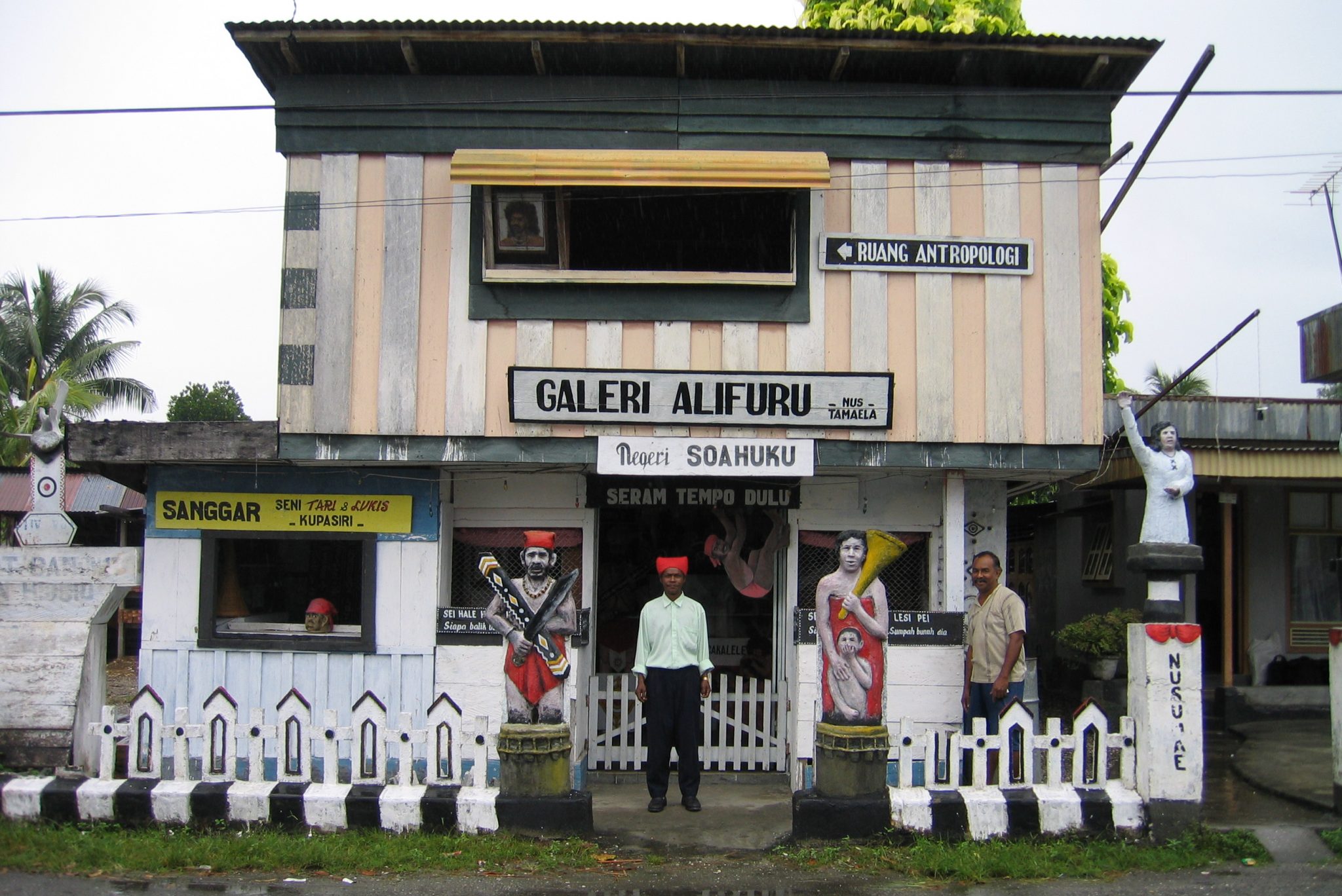| Principal Investigator: | Professor Roy Ellen |
|---|---|
| Project dates: | 1 April 2014 – 31 March 2016 |
| Funding: | British Academy |
Nuaulu, a people of Seram in the Moluccan islands of eastern Indonesia, have displayed remarkable cultural resilience over a period of more than 40 years, despite massive deforestation, growing resource pressure, in-migration of other ethnic groups, and regional communal conflict. In 2012 I published ‘Nuaulu religious practices: the frequency and reproduction of rituals in a Moluccan society’. This book showed how the ability to maintain complex cycles of ritual through demographic growth has permitted the continuation of a viable independent ‘animist’ identity. This has been accompanied by increasing assertiveness in the projection of Nuaulu interests through the politics of the ‘New Indonesia’ using modern technologies of communication.

This project aims to provide further evidence for these claims, and to identify the conditions of resilience observed in the structure of descent and marital alliance. The project explores how clan organization and marriage patterns have responded to some of these exogenous factors during the same period, and tests the hypothesis that it is the retention of the core institutions of descent, exchange and alliance (through rapid population growth) which has enabled effective ritual reproduction, and thereby maintained a distinct identity in relation to surrounding majority culture. It is hypothesized that there is a mutuality between the key relations of descent and alliance and the perpetuation of key rituals. Rituals are focussed on houses and lineages as corporate groups and once the rituals disappear the clans have less purpose, and if clans and houses disappear through demographic erosion, then rituals can no longer be performed.
This project is only possible because I have longitudinal records for a period of over 40 years of fieldwork. At the time of my doctoral research amongst the Nuaulu (1969-72), a theoretical pre-occupation among anthropologists studying eastern Indonesian societies was with forms of organization related to cross-cousin marriage (e.g. F. van Wouden, J.P.B de Josselin de Jong). Indeed, there was a time when ethnographic work in Indonesia seemed exclusively concerned with this subject, crucial as the data were to Lévi-Strauss’s theory of elementary structures, and to the earlier work of a generation of Dutch scholars mainly associated with the University of Leiden, where I had studied in 1968-9. Consequently, my first fieldwork was attuned to these issues and I assembled a considerable body of data designed to address them, including census and genealogical material. Subsequent linguistic work, which also involved a second census, conducted by Rosemary Bolton of the Summer Institute of Linguistics,
means that we have an exemplary corpus that enables me to open-up some old
debates in an interesting way.

Most of the project involves the sorting of field records for 1970-1, 1973, 1975, 1981, 1986, 1992, 1996, and 2009 and the upgrading of an existing database with new software, followed by secondary desk analysis. A short period of additional fieldwork in 2015 has enabled me to plug specific gaps in the data, update census material and re-collect other data that needed to be more carefully checked (such as terminologies).
Within the context of the core problem identified above, the plan is to examine the evidence for bilateral cross-cousin marriage, both from terminological data (in the context of the wider pragmatics of terms of address and reference), marriage norms and practices and the overall system of social organization in the context of other structural forces, which logically imply forms of in-marriage that that are less precarious in the context of population attrition through religious conversion than forms of marriage between matrilateral cross cousins alone. I will look at the concepts of ‘house’ and ‘clan’ in the light of forces emphasizing descent and alliance.
Work on kinship in the Moluccas since 1970 has indicated the existence of a diversity of systems – both cognatic (Grzimek 1991) and marital exchange between clans (Valeri 1975-6, 1980; McKinnon 1991; Hagen 2006) – suggesting a much more diverse, flexible and complex picture for Seram than was previously assumed, with ‘nuances and paradoxes of practice’ and in which ‘actions are rarely complete, and thus … rarely coincide with their type (Valeri 1994). This emerging pattern reflects what we now understand to be the case for – say – the island of Timor (e.g. Hicks 1990).
Publications
Ellen, R. (2019). Understanding geometrical features of Nuaulu shield design. Journal of Material Culture 24 (2), 210-231. Published online 10 October 2018, https://doi.org/10.1177/1359183518803393
Ellen, R. (2019). Contrasting acoustical signatures and the power in ritual: Nuaulu spirit healing in the Moluccan islands. In Hearing Southeast Asia: sounds of hierarchy and power in context (ed.) N. Porath, 174-201. Copenhagen: NIAS Press.
Ellen, R. (2018) Kinship, population and social reproduction in the ‘new Indonesia’: a study of Nuaulu cultural resilience. Abingdon UK, New York: Routledge.
Ellen, R. (2016). Nuaulu ritual regulation of resources, sasi and forest conservation in eastern Indonesia. South East Asia Research 24 (1), 5-22.
Ellen, R. (2017). Is there a connection between object diversity and aesthetic sensibility?: A comparison between biological domesticates and material culture. Ethnos: Journal of Anthropology 82 (2), 308-330. [Online publication: DOI:10.1080/00141844.2015.1052085].
Ellen, R. (2014). Pragmatism, identity and the state: how the Nuaulu of Seram have re-invented their beliefs and practices as ‘religion’. Wacana. Wacana: Jurnal Ilmu Pengetahuan Budaya [Online] 15:254-285. View full text.

